Refunds. Returns. Two words that are dreaded for ecommerce entrepreneurs.
If we could take a quick look into the mind of an entrepreneur, and pull out some of the thoughts that they have when they receive a refund request, we’d likely find:
- “Oh no, they didn’t like my products”
- “I’ve just wasted my marketing budget”
- “I’ve lost all of the revenue from this customer”
- “All of that hard work I put into this was for nothing”
But refund requests aren’t all bad – you can still impress and delight your customers when they ask for a refund, even if it didn’t work out this time.
That’s exactly why it’s so important for you to remain positive whenever a customer wants to return an order, or ask for a refund.
After all, you’re the business owner. You’re the one representing your brand. It’s your job to deal with the situation in a professional manner, and provide the best service possible for your customers.
But, what’s the best way to handle refunds and returns, especially as a dropshipper?
It’s an essential part of running a business, but it’s not simple, which is why we’ve created this article.
We’re going to explain everything you need to know to make returns and refunds a pleasant process for your customers, and show you exactly why a solid return policy can increase both your conversions and your revenue.
Ready? Let’s dive in.



Setting Expectations is Essential

As an entrepreneur, your first step to success with handling refunds and returns is setting clear expectations for anybody who lands on your store, regardless of whether they make a purchase or not.
→ Click Here to Launch Your Online Business with Shopify
Why?
It’s simple – clear refund and return policies are super important for your customers in their shopping journey.
In fact, research found that 67 percent of online shoppers check a businesses returns page before they make a purchase.
That’s exactly why it’s so important for your online store to have an easy-to-find returns policy page, with all the information that your customers will need to make a purchase in confidence.
There are a few things you definitely should include on your returns policy page. Those are:
- If any items are exempt from your returns policy (e.g., underwear, socks due to hygeine reasons)
- If your returns are free of charge
- If you offer exchanges for the products
- Which countries are eligible for refunds and returns
- The period of time when customers are eligible for a return
Looking for an example returns policy? Gymshark is an ecommerce brand that has its returns policy nailed down.
As you can see from the image below, they have a dedicated page for their return policy, which contains everything you’d need to know if you were a customer looking for a refund, and you can also click through related articles for more in-depth advice about FAQs.
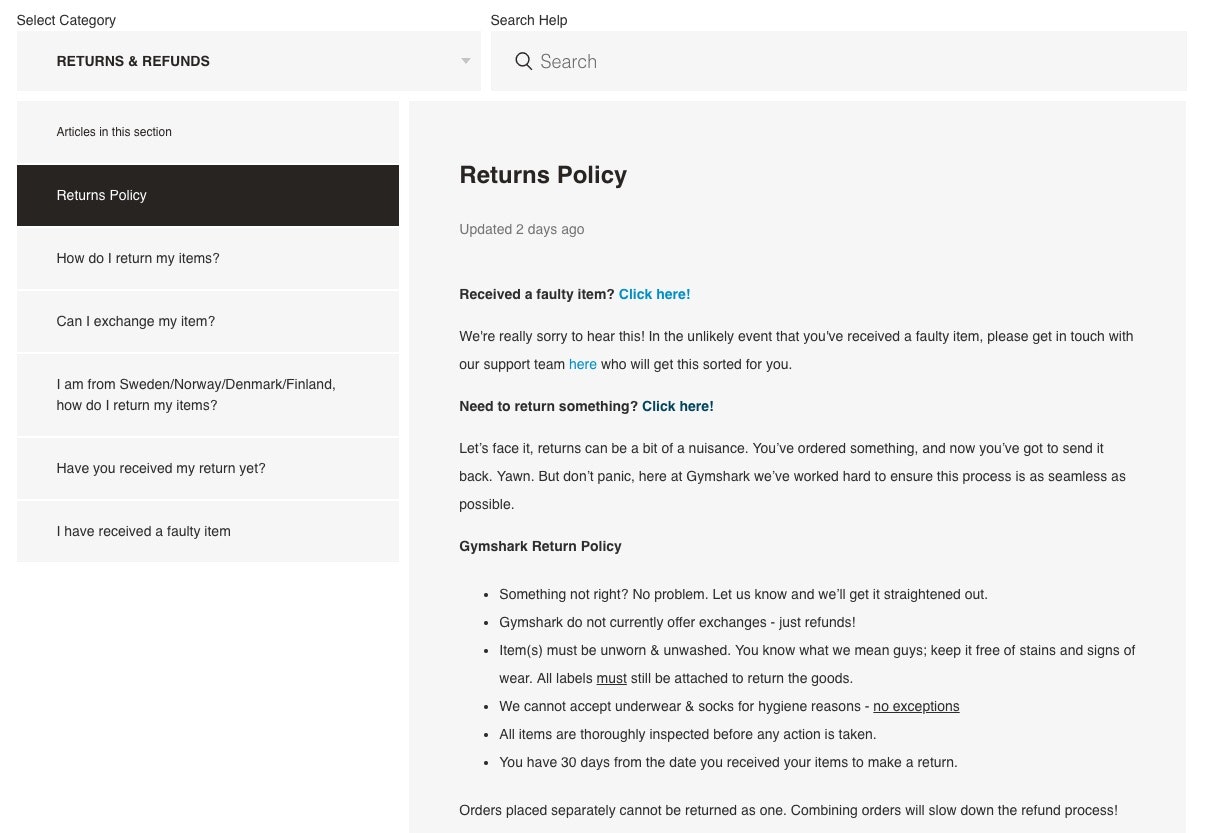
But, what about the position of their returns policy on their website? Was it easy to find?
Generally speaking, shoppers have been primed to head down to the footers of websites to search for legalities, or information about policies.
And, yep, you guessed it – at the bottom of their webpages Gymshark have a “Help” section, containing their size guides, their FAQs, their order policies, and their delivery and refunds policies.
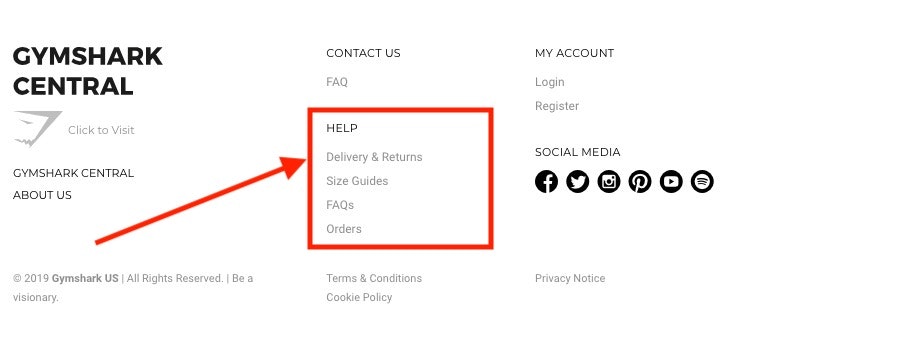
All in all, whenever I’m shopping with Gymshark, I feel like I’m shopping in confidence. This is because I know that if something doesn’t work out, I can still have a positive shopping experience with the brand.
That’s exactly how you want your customers to feel – trust is super powerful when it comes to ecommerce.
Your Return Policy Can Help You Earn Sales

Dropshipping returns policies are essential for ecommerce businesses big and small.
Earlier we spoke about how a business’ return policy is essential for allowing customers to shop in confidence. But we’ve yet to mention how powerful your return policy can be for increasing the number of sales you receive.
Yep, you read that right – your returns policy can earn your business sales in the long run.
But, how?
Think of it like this: if you offer free returns for your products, your customers can make a purchase from you knowing that, in the worst case scenario, if they need to send the product back, they’re covered.
And this is liberating for your customers. But most importantly, 95 percent of shoppers say that a smooth return process would influence them to buy from a business again.
But, it’s important to note that, while offering free returns for 30 days is an impressive policy, it must be backed up with growth tactics, otherwise you could end up hemorrhaging money.
You can add customers to your mailing list. That way, if they do return their product, you’ve still got their email address, which you can send targeted marketing email campaigns to. Who knows, you might even end up making some sales.
If you acquire customers with paid marketing campaigns, you can retarget them with updated ones. This will help you to acquire more sales from customers by targeting them with products that you think they’ll be interested in.
The most important thing, however, is that you try not to look at returns negatively. As we’ve just explained, it might mean that you miss out on the initial capital, but providing a service which your customers are looking for can help you to build a sustainable brand for the long-term.
How Dropshippers Are Affected By Returns

When you’re dropshipping, you might be worried about how you’ll handle returns, and that’s totally understandable.
After all, if you’re not handling or shipping any of your products yourself, the concept of accepting returns for them might sound confusing.
But, honestly, running your business using the dropshipping business model isn’t an excuse to shirk away from accepting refunds or returns.
Why?
Well, this is the reality: your customers likely don’t know that you’re dropshipping.
Heck, they’ve probably never heard of the word “dropshipping.”
To them, it doesn’t matter where the product was shipped from.
All they’re really worried about is moving forward.
Why Dropshippers Should Offer Returns
It’s a shame that it didn’t work out with this order, but it’d be an even bigger shame if their shopping experience with your store was spoiled because they couldn’t return their product.
And, as a new business, your first customers are vital. They could go on to become superfans of your brand, so it’s in your best interest to treat them well.
That’s why we recommend accepting refunds and returns so strongly.
But if you do opt to offer refunds for your products, you need to make it easy for your customers.
Offering Refunds Without Returns
As a dropshipper, you can actually offer refunds without needing your customers to return their products, and it can work out for both parties.
Wait, what?
Yep – that’s right. If you want to offer refunds and provide great customer support but not deal with deliveries, here’s what you can do.
Ask your customer if they’d like a brand new product instead of a refund. You can tell them that they can keep the existing product too.
If they accept, perfect! They’ll be pleased by the gratuity product you send them, and if your margins are big enough, you might end up still being net positive in revenue too.
This really works well if a customer unfortunately receives a damaged product – of course, ask them for pictures to validate their request before you agree to send a new product.
How to Create a Returns Policy Page
Okay, we’ve spoken about how important returns policies are for a business.
Now it’s time to get into the nitty gritty of creating a returns policy page for your Shopify store.
First of all, you’re going to need to login, head over to your Shopify admin page, and select the “Online Store” sales channel.
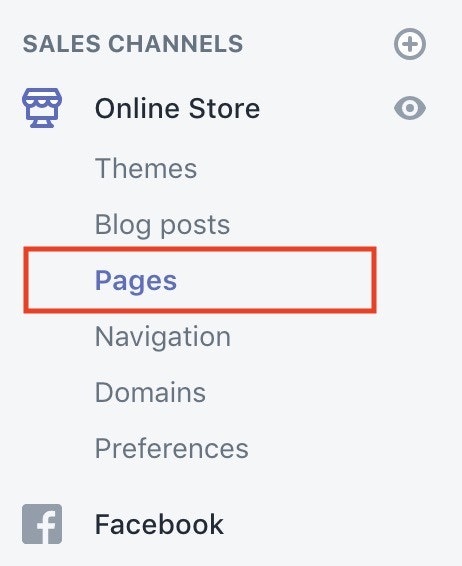
After you’ve opened up your Online Store tab, click on “Pages” next.

From here, you’ll see all of the existing pages on your store, and you’ll need to click on “Add page.”

Next, you’ll need to come up with a title for your page – Refunds and Returns Policy works – and you’ll need to enter your policy into the “Content” box.
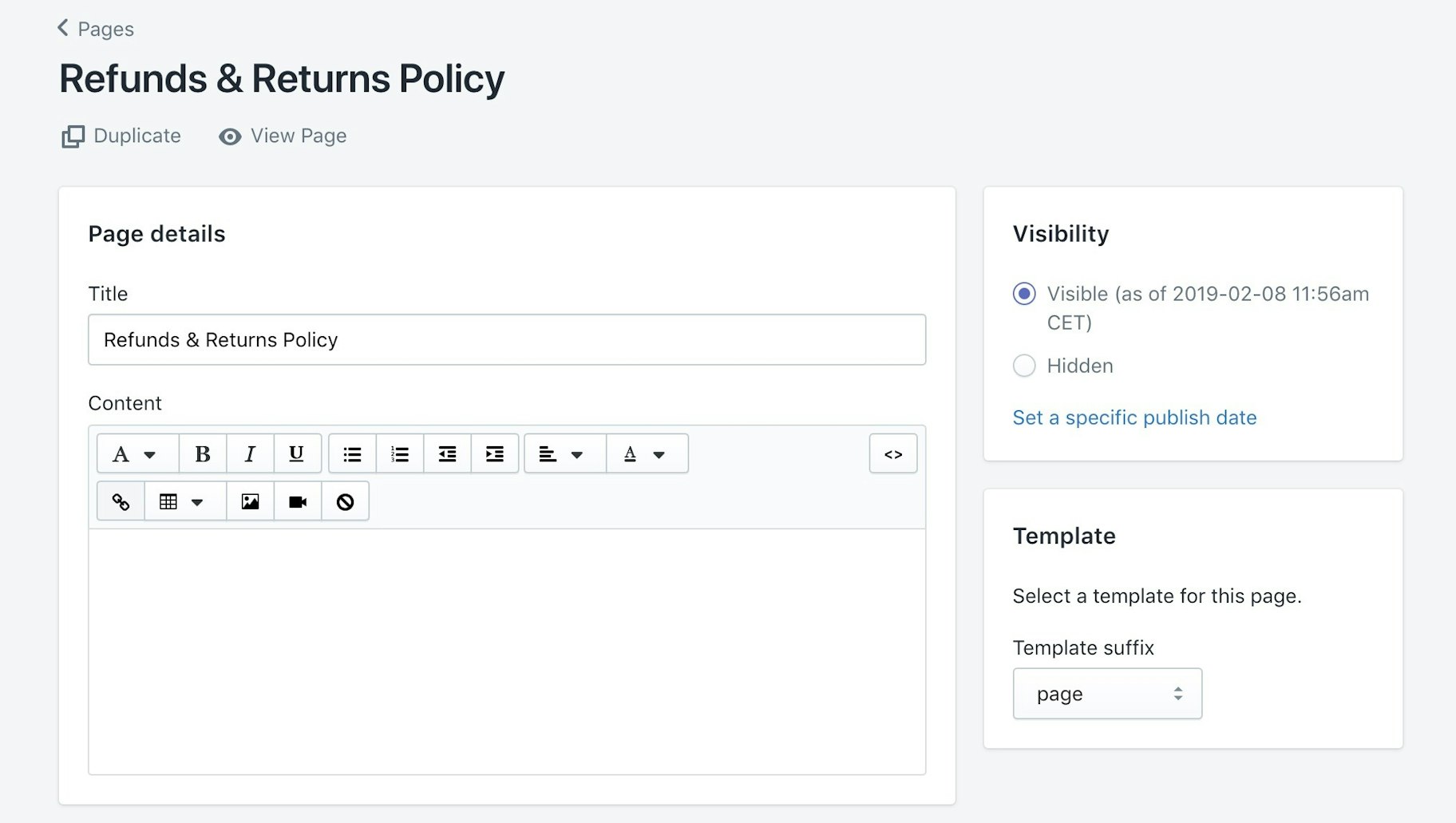
Don’t worry – you don’t need to sit down and manually write out your entire returns and refunds policy yourself.
You can use Shopify’s free refund and return policy generator to give you a strong starting point.
Make sure you read through all of the content carefully, and change or update anything that is necessary.
Once your content is sorted, click on “Save” at the bottom of the page, and you’ll be prompted with a page creation notification, as shown in the image below.

At this point your refunds and returns policy is created, but we need to make sure that shoppers who visit your store can actually see it. That’s why we’re going to click on “add it to your store’s navigation.”
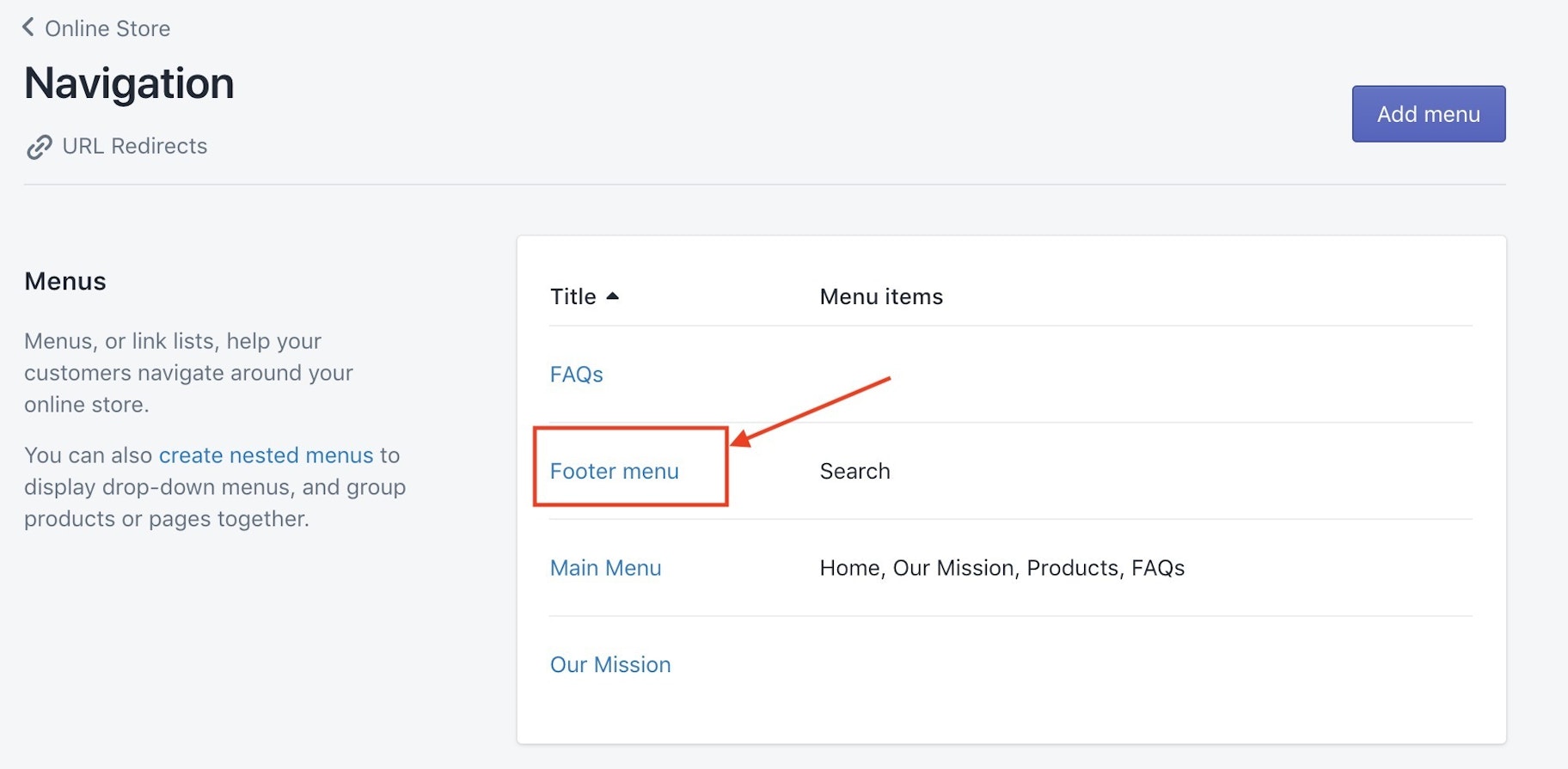
From here, all you’ll need to do is add the page to your footer menu, and you’re done.
Wasn’t so tough, huh?
Okay, that’s it from us! Now you know why offering refunds and returns is so important, and how you can create your own refunds and returns policy for your store.
If you’ve got any questions about refunds, returns, or anything related to ecommerce, drop them in the comments section below – we read them all!





